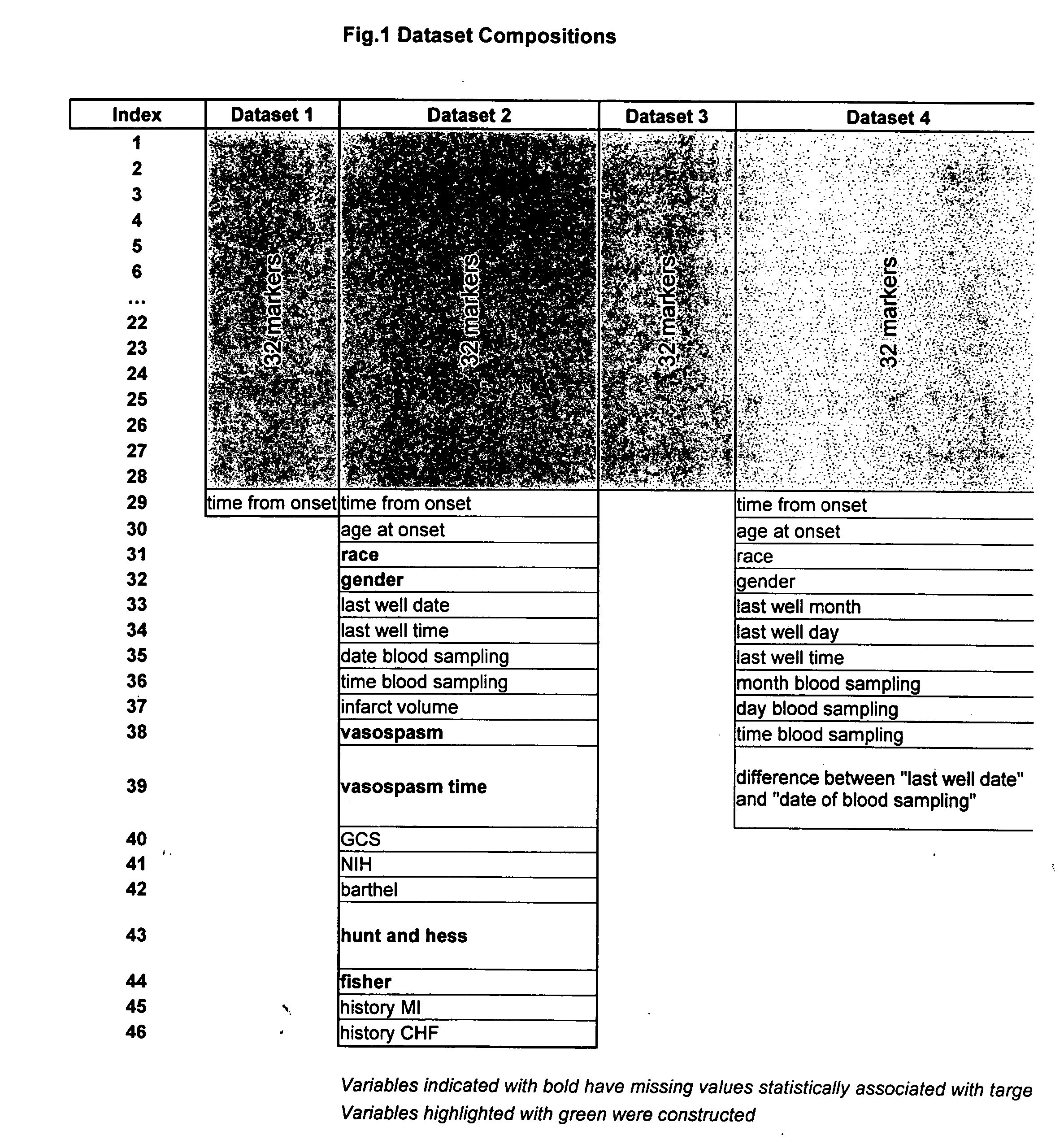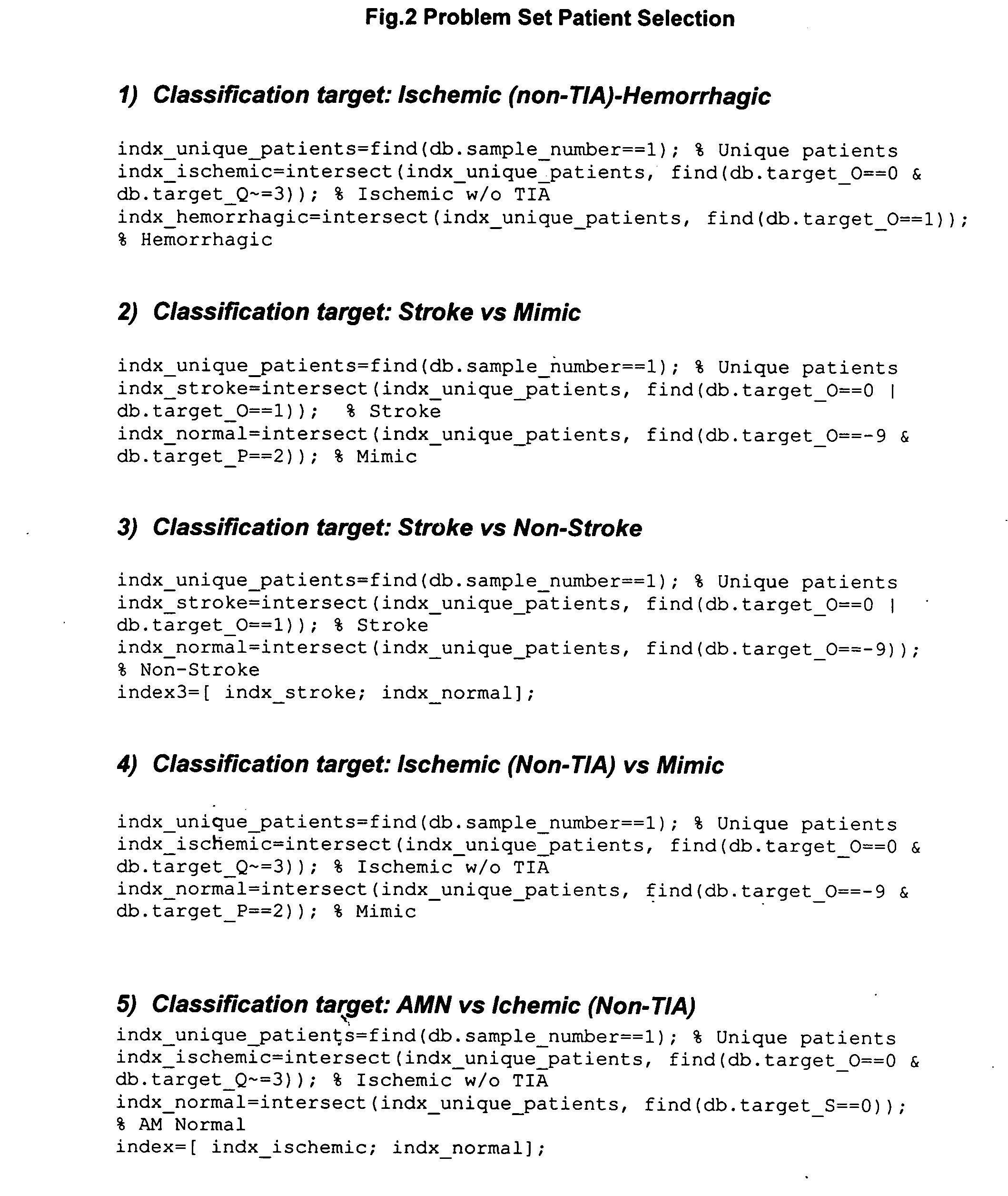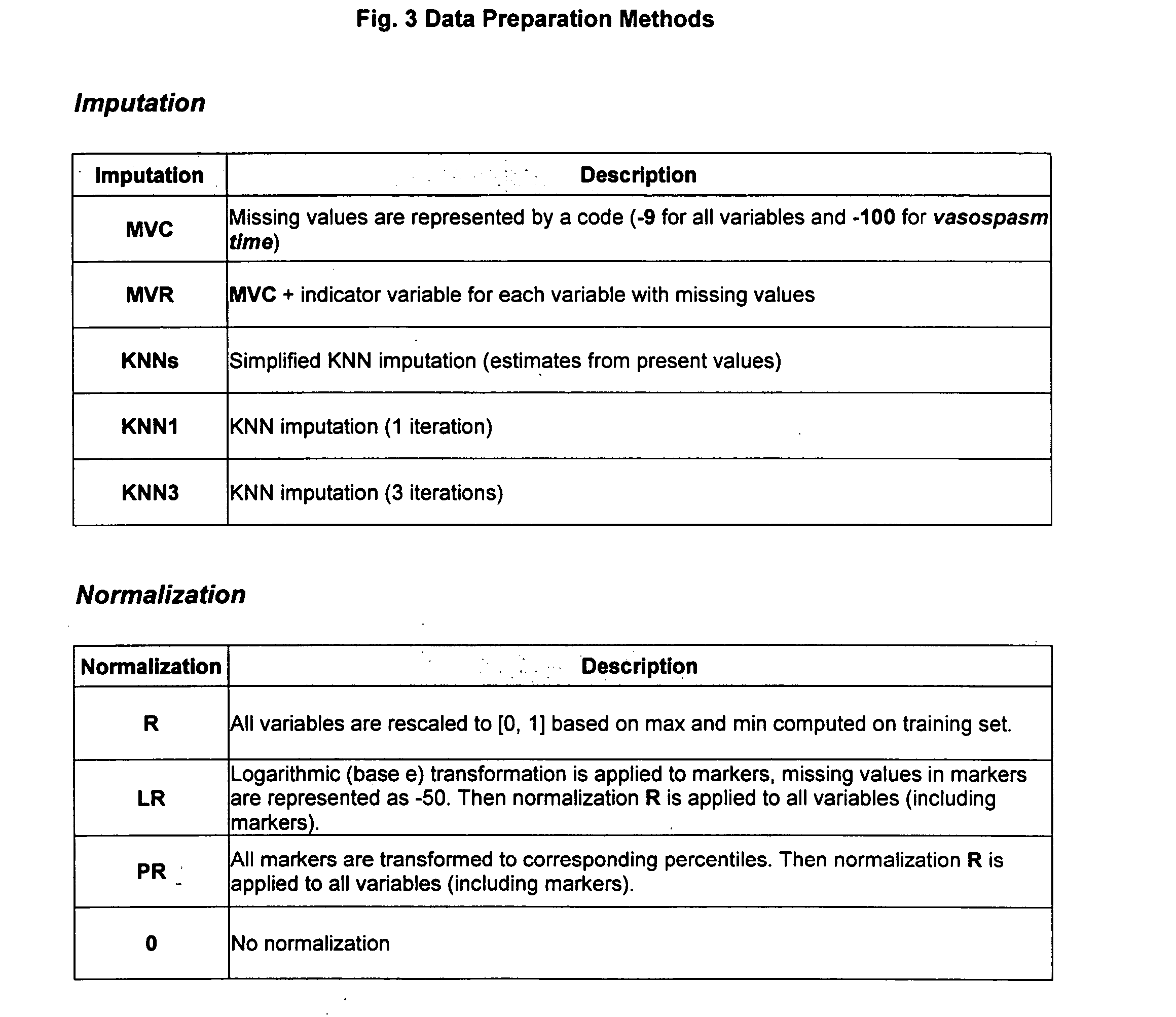Diagnostic markers of cardiovascular illness and methods of use thereof
a technology of diagnostic markers and cardiovascular diseases, applied in the field of identification and use of diagnostic markers for cardiovascular diseases, can solve problems such as sudden weakness, long-term disability, sudden weakness, etc., and achieve the effect of reducing dimensionality
- Summary
- Abstract
- Description
- Claims
- Application Information
AI Technical Summary
Benefits of technology
Problems solved by technology
Method used
Image
Examples
example 1
[0207] Selection of Markers for Detecting Stroke and its Sub-Types
[0208] Samples from healthy patients, patients diagnosed with stroke and further diagnosed with a stroke sub-type and patients diagnosed with stroke mimic were assayed for a variety of markers. The goal of this investigation was to discover biological markers that would allow a clinician to determine whether a patient had a stroke and, if so, to perform a differential diagnosis. The research conducted was characterized by three aims. [0209] I) Build predictive computational models with respect to selected target clinical classifications with a goal of yielding high classification performance measured as the area of the model Receiver Operator Characteristic (ROC) curves. [0210] II) Obtain unbiased estimates of future performance of the best models in future patient instances sampled from the same population. [0211] II) Reduce the number of features needed from each dataset for the classification task while improving,...
example ii
[0350] A study of 107 hypertensive patents taking ACE Inhibitors to control their blood pressure was performed. Normal blood pressure for an adult is around 120 / 80 mmHg. We defined a hypertensive patient as a patient with BP above 149 / 90 mmHg. The patients were newly diagnosed and not on any previous psychotropic medication. ACE inhibitors were not distinguished between, and We also did not distinguish non-response due to lack of BP reduction vs. non-response due to adverse effects.
[0351] The definition of a “Responder” used was a patient who is hypertensive, takes an anti-hypertensive medication, and has consistent normotensive BP after medication treatment without adverse side effects.
[0352] We used the initial diagnosis of hypertension by the physician on the patient's chart as sufficient information to classify the patient as hypertensive. A BP at diagnosis, or a series of prior hypertensive BP measurements reinforces this diagnosis.
[0353] We set a minimum duration of 6 month...
example iii
[0429] Sequencing of AGT, ACE, AGTR1, GPB, EDN1, EDN2, alpha-adducin, haptoglobin, CYP2C9, RGS2, ADRA1a, 11betaHSD2, ADRA1b, ADRA2A, ADRAB1, ADRAB2, REN, APOA, APOB, CETP, LIPC, EDNRB, or ENOS gene(s)
[0430] Plasmid DNA containing the AGT, ACE, AGTR1, GPB, EDN1, EDN2, alpha-adducin, haptoglobin, CYP2C9, RGS2, ADRA1a, 11betaHSD2, ADRA1b, ADRA2A, ADRAB1, ADRAB2, REN, APOA, APOB, CETP, LIPC, EDNRB, or ENOS gene(s) gene inserts is isolated using the Plasmid Quik.TM. Plasmid Purification Kit (Stratagene, San Diego, Calif.) or the Plasmid Kit (Qiagen, Chatsworth, Calif., Catalog #12145). Plasmid DNA is purified from 50 ml bacterial cultures. For the Stratagene protocol “Procedure for Midi Columns,” steps 10-12 of the kit protocol are replaced with a precipitation step using 2 volumes of 100% ethanol at −20.degree. C., centrifugation at 6,000.times. g for 15 minutes, a wash step using 80% ethanol and resuspension of the DNA sample in 100 ul TE buffer. DNA concentration is determined by hor...
PUM
| Property | Measurement | Unit |
|---|---|---|
| Weight | aaaaa | aaaaa |
| Electrical resistance | aaaaa | aaaaa |
| Density | aaaaa | aaaaa |
Abstract
Description
Claims
Application Information
 Login to View More
Login to View More - R&D
- Intellectual Property
- Life Sciences
- Materials
- Tech Scout
- Unparalleled Data Quality
- Higher Quality Content
- 60% Fewer Hallucinations
Browse by: Latest US Patents, China's latest patents, Technical Efficacy Thesaurus, Application Domain, Technology Topic, Popular Technical Reports.
© 2025 PatSnap. All rights reserved.Legal|Privacy policy|Modern Slavery Act Transparency Statement|Sitemap|About US| Contact US: help@patsnap.com



